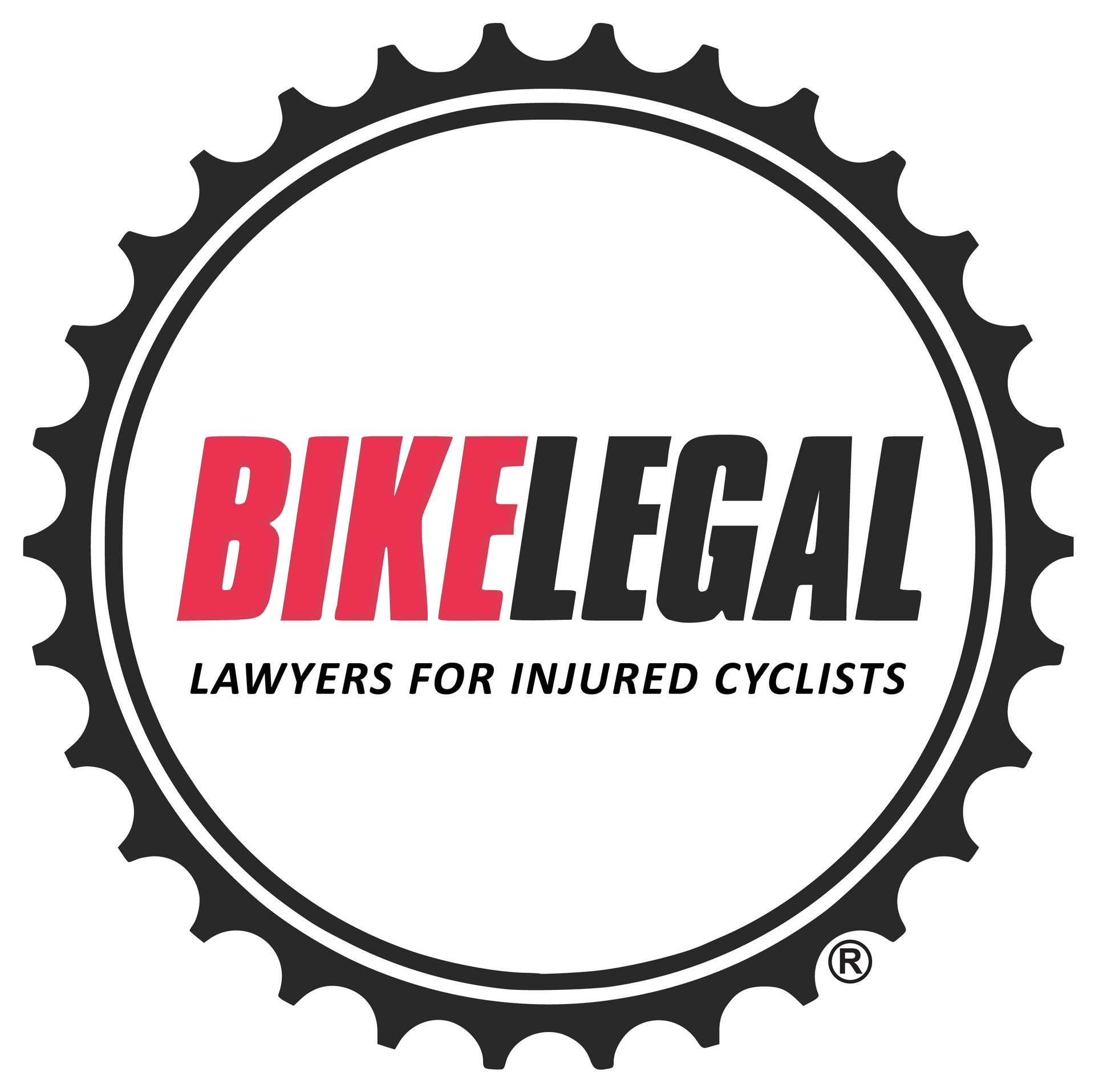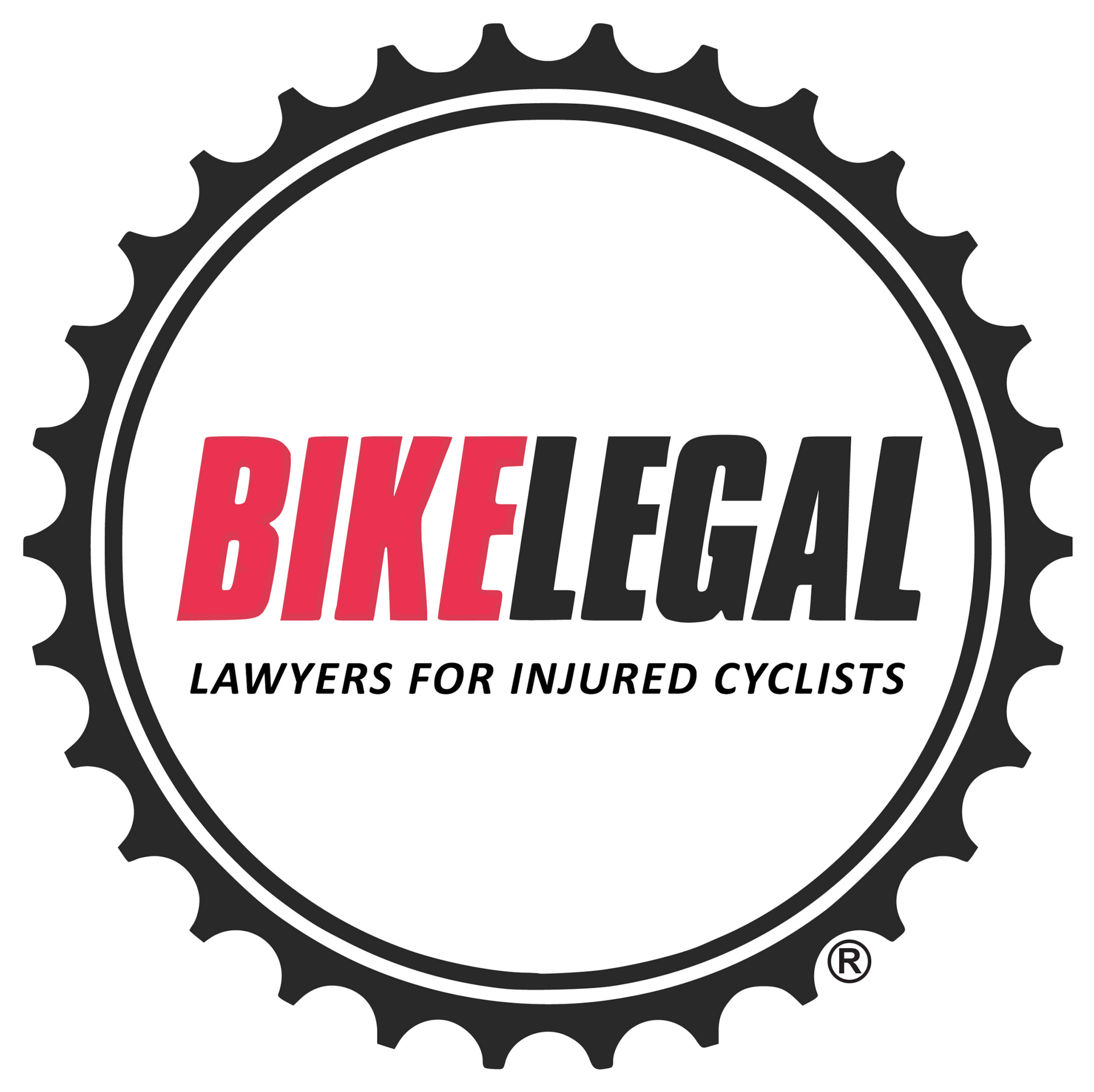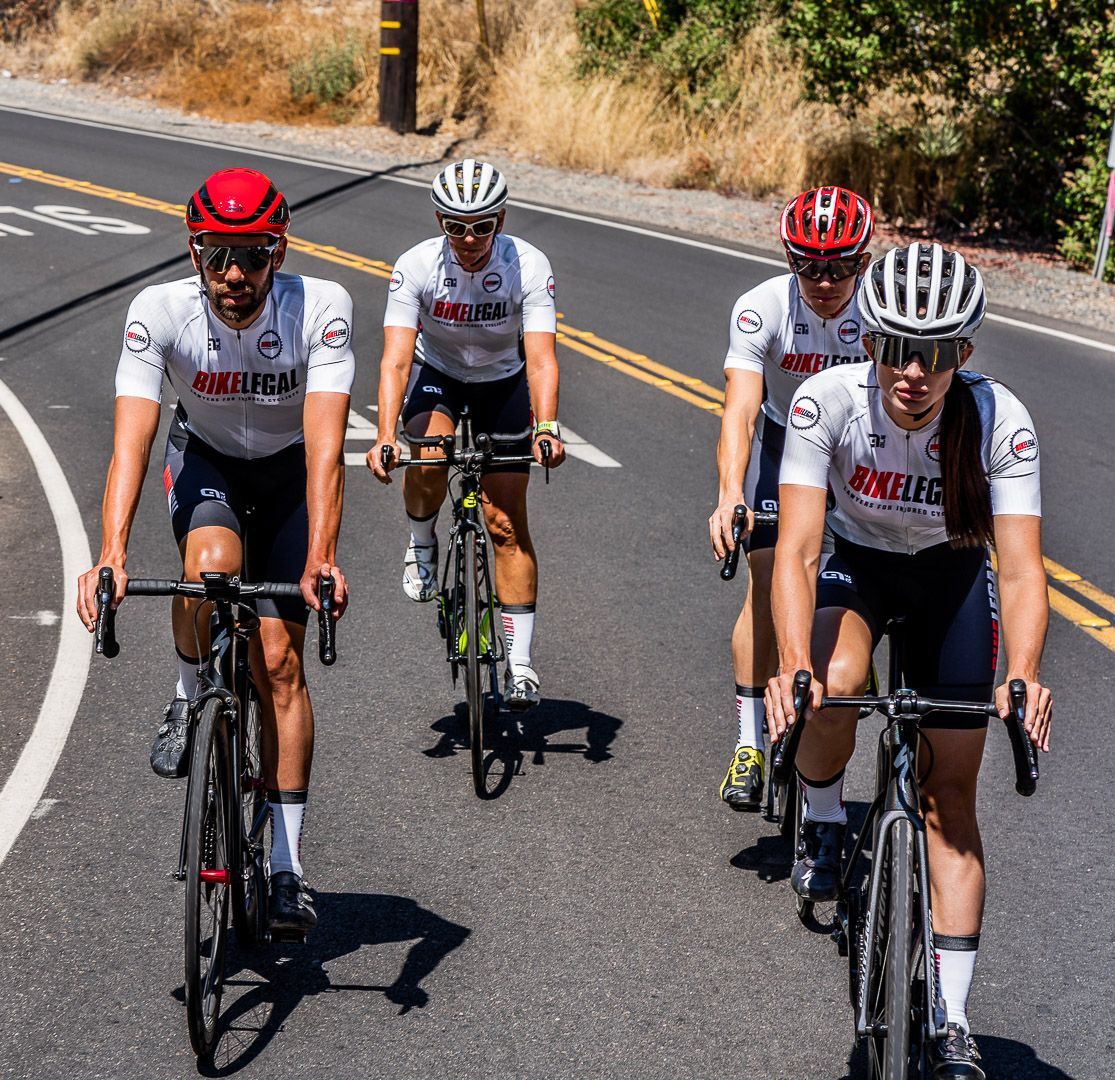PTSD After a Bicycle Crash: Symptoms, Recovery Tips, and Real Stories
Follow us on
social media!
A bicycle crash can leave more than physical injuries—it can also cause lasting emotional scars like anxiety, fear, and post-traumatic stress disorder (PTSD). Many cyclists face these challenges long after their injuries heal. If you’re struggling, know that you’re not alone. PTSD is a common reaction to trauma, not a sign of weakness.
This article explores the mental toll of bicycle accidents, real stories from cyclists who’ve been there, and practical steps to recognize symptoms and seek support.
Here's what we'll cover:
- What PTSD is and how it affects cyclists.
- Common PTSD symptoms after a bike crash.
- Real stories from cyclists who’ve experienced PTSD.
- Helpful resources and tips for recovery.
- How a bicycle accident attorney can assist with recovery.
Let's get started.
TL;DR: PTSD After a Bicycle Crash
- What is PTSD After a Bicycle Crash?: PTSD is a mental health condition triggered by a traumatic event, like a bicycle accident, and can cause lasting psychological effects. It's a normal response to an abnormal situation.
- How Do I Know If I Have PTSD? Common Symptoms After a Bicycle Crash: Common PTSD symptoms include avoidance of cycling or related triggers, physical reactions (like increased heart rate), flashbacks/nightmares, and hypervigilance.
- Current Statistics on Bicycle Accidents and PTSD Risk: Bicycle accidents are unfortunately common, with fatalities on the rise. A significant percentage of accident victims, including those in bike crashes, experience PTSD, highlighting the need for attention to mental health.
- Real Stories from Cyclists Suffering with PTSD After a Bicycle Crash: Hearing from cyclists who have experienced PTSD after crashes provides valuable insights and a sense of shared experience.
- Finding Help for PTSD Recovery After a Bicycle Crash: Seeking help for PTSD is a sign of strength. Options include talking to a doctor or therapist, different types of therapy (CBT, EMDR, exposure therapy), support groups, and mental health apps.
- Additional Tips for Managing PTSD and Returning to Cycling: Strategies for managing PTSD and returning to cycling include starting with an indoor trainer, riding with others or on quiet routes, using safety equipment, and practicing mindfulness.
- How a Bicycle Accident Attorney Can Help with PTSD Recovery: A bicycle accident attorney can analyze your accident to determine if you have a case and identify potential paths for compensation. They can also assist in connecting you with medical treatment and therapy for PTSD, which may be included in your compensation claim. By handling these details, they provide guidance and support, allowing you to focus on your recovery while ensuring your rights are protected.
What is PTSD After a Bicycle Crash
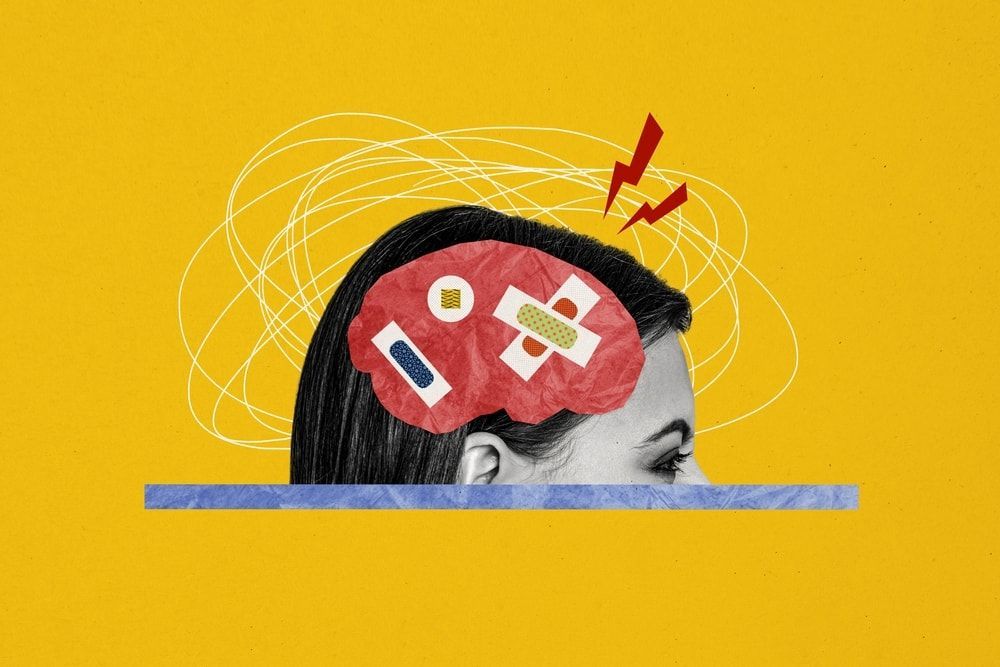
Post-traumatic stress disorder (PTSD) is a mental health condition triggered by a terrifying event—either experiencing it or witnessing it. This isn't just feeling a little shaken up after a scary event. It's a real mental health condition. It’s triggered by experiencing or witnessing something traumatic. A bicycle crash, especially one involving a car or truck, can be that kind of event. It can leave a lasting mark.
It’s important to note that PTSD symptoms may not appear right away. They can take weeks or even months to develop fully.
This delay can make it tough to link the symptoms back to the crash. This is why awareness is so important. Left unchecked, PTSD from a bicycle accident can impact your mental and physical health for a long time. It’s important to address it.
How Do I Know If I Have PTSD?
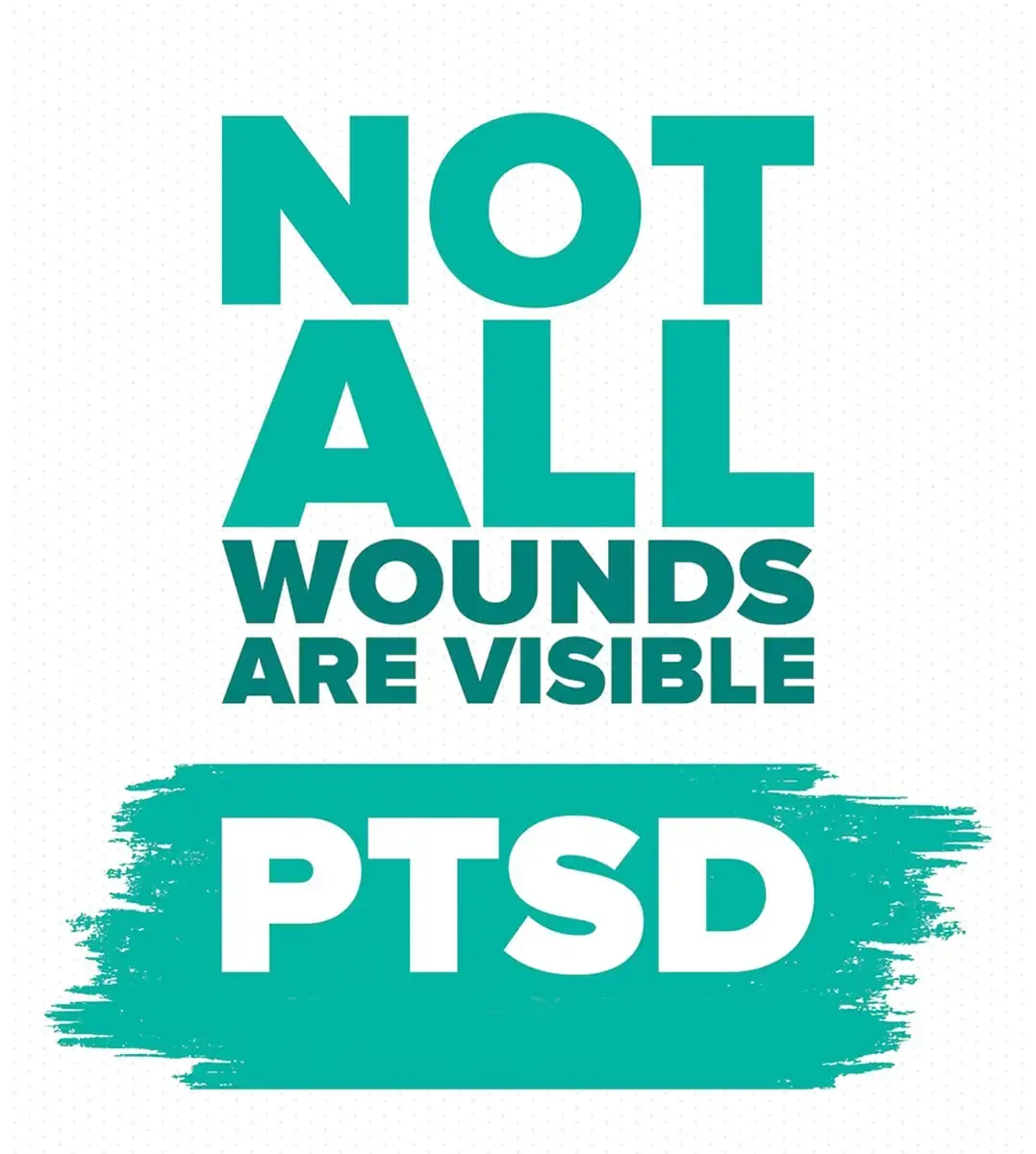
Recognizing PTSD goes beyond feeling nervous or unsettled after a bicycle accident. PTSD involves a combination of symptoms that can disrupt your daily life and relationships. Here are some common signs of PTSD to watch for:
- Avoidance: You might avoid cycling, certain routes, or places associated with the accident. This is your brain’s way of shielding you from reliving the trauma.
- Physical Reactions: Anxiety-related symptoms, such as a racing heart, sweaty palms, or stomach discomfort, can occur near traffic or the scene of the incident.
- Flashbacks and Nightmares: Reliving the accident through flashbacks, distressing dreams, or intrusive thoughts can be a frequent and troubling experience.
- Hypervigilance: Feeling constantly on edge, easily startled, or overly alert can make it challenging to relax, even off the bike.
- Relationship Tension: Cycling often serves as a stress outlet for many, and being unable to ride may lead to increased frustration and strain on personal and family relationships.
- Increased Stress: Losing your ability to ride can add to overall tension, leaving you without a healthy way to release stress.
Everyone’s experience with PTSD is unique. You might notice some, all, or even different symptoms. If these signs are affecting your life or relationships, seeking support can help you regain control and start the healing process.
Read Next: What to Do After a Bicycle Accident: A Cyclist's Guide (Checklist)
Current Statistics on Bicycle Accidents and PTSD Risk
It’s easy to feel isolated after a bicycle accident, like you’re the only one going through this. But the numbers tell a different story. Bicycle accidents are sadly common, and their psychological impact is often underestimated. These statistics paint a stark picture:
- Fatalities on the Rise: In 2022, approximately 1,105 cyclists were killed in traffic accidents in the U.S. This is a 13% increase from 2021 (935 deaths). This trend is alarming, with a 37% rise in preventable deaths since 2012. In 2021 alone, the National Highway Traffic Safety Administration (NHTSA) reported 966 bicyclist deaths in motor vehicle crashes.
- Injuries Still Significant: While nonfatal injuries have decreased (from 532,212 in 2011 to 299,944 in 2021), there were still 375,797 emergency department-treated severe injuries related to bicycles and accessories in 2021. This shows that even when accidents aren't fatal, they can still cause serious harm.
- Demographics of Danger: Most fatalities happen in urban areas (85% as of 2021), and males account for a staggering 88% of all bicycle deaths. Younger cyclists (under 20) make up nearly 60% of those involved in bicycle/motor vehicle crashes.
- PTSD Prevalence: While specific data for bicycle accidents is limited, studies show that nearly 40% of motor vehicle accident victims experience PTSD. Similar or even higher rates likely apply to cyclists, given the often traumatic nature of these incidents.
- PTSD Symptoms: Common PTSD symptoms include:
- Re-experiencing the event (flashbacks, nightmares).
- Avoiding reminders of the psychological trauma.
- Negative changes in mood and thinking (guilt, detachment).
- Heightened sensitivity (sleep problems, irritability).
- Impact on Life: PTSD can significantly disrupt your daily life, especially if cycling plays a central role. For some, it’s a beloved sport and a source of joy. For others, it’s a primary mode of transportation or a crucial way to manage stress. When PTSD makes riding difficult or impossible, it can affect not just your mental health but also your routine, sense of independence, and overall well-being.
Real Stories from Cyclists Suffering with PTSD After a Bicycle Crash
It's one thing to read statistics but another to hear from people who've lived through it. We spoke with several Bike Legal clients who experienced PTSD after bicycle crashes. Their stories offer valuable insights and a sense of shared experience. We hope these stories resonate with you.
Bike Legal Q&A's with Real Victims
We asked bicycle accident victims a series of questions about their experience. Here are some of their responses:
What type of cyclist are you?
- Lauraine: Avid Road Cyclist
- Ivor: Commuter, Cat 2 Road racer, Gravel Racer
- Sarah: Elite iron distance triathlete
How many hours do you typically ride outdoors each week (before your accident)?
- Lauraine: Before the accident, I averaged 20-24+ hours a week.
- Ivor: 20
- Sarah: 15+ hours per week
Were you training for an event or race when your accident occurred? If so, how did that affect your upcoming events and races?
- Lauraine: I was in the middle of a fundraiser for Children's Cancer Research—it was my third year as a participant—but sadly, I was unable to finish and had to withdraw.
- Ivor: Yes, I generally compete in masters nationals, and was also training for some stage races, including some gravel stage races.
- Sarah: Yes, I was training for the Hawaiian Ironman. The accident resulted in me having to change my training by cutting back significantly. It occurred during my primary 6-8 week block of training in July, leaving a big gap in my training block.
How soon after the accident did you attempt to ride on the road again?
- Lauraine: As soon as I was able - and then I was hit again. Now, I'm not too sure.
- Ivor: Outside? It was a few months. I couldn’t really ride outside safely because my knees were damaged to the point that I couldn’t clip in/out.
- Sarah: I actually was a little bit scared, and my coaches did not want to risk another accident. We decided to stay indoors for close to 2 months.
Can you describe your initial feelings when you thought about getting back on a bike?
- Lauraine: Nervous, anxious - full of anxiety. Sweaty palms, elevated heart rate, nausea, dry mouth.
- Ivor: Fear, anxiety. I had severe anxiety for months every time I was on a mountain road (in a car), constantly envisioning a car coming around the corner to hit me - which is what happened to me.
- Sarah: I hope I can be seen. I was frightened to put my head down and push in the aero position because I wanted to see, so it affected my aerodynamics for a while.
Do you have an indoor bicycle trainer setup, and if so, how did it aid in your recovery?
- Lauraine: Yes. Physically, it helps with cardio and is low-impact—my neck, back, and knees are still in physical pain every day—but mentally, I know it's not the same thing as riding outdoors and exploring.
- Ivor: Yes, and I used it every day. It was instrumental in my recovery.
- Sarah: Yes, my indoor trainer allowed me to continue training even when I couldn’t properly use my arm. It was a safe place to push in aero and make sure I could make the best of a bad situation.
Did you seek any mental health or therapy sessions to help you cope with the trauma? If so, was it beneficial?
- Lauraine: Yes. I'm still in treatment.
- Ivor: Yes, and it was also a crucial part of my recovery.
- Sarah: I used the Headspace app throughout my career, but I probably should have used proper help following this accident. I didn’t realize how much it affected me until I got back on the open road, which was a couple of months after my accident.
How did you find therapy (mental) for your trauma?
- Lauraine: I sought out a therapist who specializes in PTSD through my insurance. Ultimately, one has to not just find someone who specializes & treats trauma, but one must also "fit" with the therapist. I'm currently on my 3rd therapist - I like her so far. She encourages, as well as praises baby steps and sends over literature & videos to help with sleep and understanding the situation that brings fear.
- Ivor: Finding a therapist that’s a fit for you is hard. There isn’t really a great way to do it. But generally, if you’re an athlete, you probably want to find an athlete or someone who works primarily with athletes. Athletes are wired differently. It’s okay to try out different people to find one that works for you, but that can be time-consuming and expensive. There are apps like BetterHelp, but I haven’t tried them.
How did your loved ones react to your decision to ride again, and how did their feelings influence your decision to return to the bike?
- Lauraine: I was met with disdain, especially after the second accident. We no longer speak.
- Ivor: My wife was very much in favor of it, though nervous about it. She understands the benefits of cycling and knows I do everything in my power to be safe.
- Sarah: Well, it is my job, so they expected it. They were surprised that it affected me mentally. I was surprised, too. I just noticed that I was nervous all the time to start with.
Since the accident, have you incorporated any new safety equipment or technology, such as front and rear cameras or radar devices?
- Lauraine: If & when I get to that point, these are things that I would want on my bike - but I'm not there yet.
- Ivor: I’ve always ridden with multiple lights, both front and rear, cameras front and rear, and a mirror.
- Sarah: I use lights more now, even during the day. I try not to ride in dark clothing either. Anything I can do to be more visible.
Riding with friends rather than alone can be beneficial for the first few rides back. Did you find this to be true for you?
- Lauraine: Yes. After the first accident, I rode with my boyfriend. After the second, currently - not yet.
- Ivor: Absolutely. It was a very long time until I did a solo ride. In fact, my first solo ride after the car hit me was the ride where the deer hit me and broke my neck. That was a full 6 months after the car.
- Sarah: Absolutely. Being in a group was much better. However, I rarely was able to ride in a group because my sport is so individual.
How many rides did it take before you felt your confidence was beginning to return?
- Lauraine: After the first ride, I felt ready, and I knew that I needed to get on the bike sooner rather than later. After the second accident, nope.
- Ivor: Well… I recently (another 5-6 months after the neck injury) did my first outside solo ride… My confidence isn’t fully back yet.
- Sarah: It took a few months of outside riding. I still check my brakes more than I should; I just don’t trust the cars anymore.
Are there ongoing challenges you face when cycling because of the accident?
- Lauraine: I hate intersections - doesn't matter if I'm walking, or driving, let alone cycling! My neck has hardware in it & the muscle stiffens up quite a bit, limiting my mobility, which only intensifies my fears of being on a bike.
- Ivor: Neck mobility isn’t great.
- Sarah: I am still struggling to commit to head-down riding in the TT position. I use a criterium track where cars are not allowed to get the feel of it outdoors safely.
How do you manage ongoing fears or anxieties related to cycling on the road?
- Lauraine: Currently in therapy.
- Ivor: Moving meditation/being present and hyper-aware.
- Sarah: I think you just have to expose yourself to fears in a controlled way. Slow re-introduction back to riding via the indoor trainer, then the group, then a quiet loop, then regular riding is one method.
What advice would you like to share with someone about to get back on their bike after a similar accident?
- Lauraine: Choose quiet trails with little to no people to start, physical therapy, & mental therapy.
- Ivor: Don’t ride in fear, but always assume everyone is going to make the decision that will kill you. Don’t be complacent. Make sure you’re always thinking about your exit strategy. I almost NEVER ride all the way to the right side of the road because, at that point, I’ve got nowhere to go. I leave myself some space to escape.
- Sarah: I think you just need to remind yourself that it was an accident. Personally, I went 15 years of my career without a hit, so I just continually reminded myself of that.
Finding Help for PTSD Recovery After a Bicycle Crash
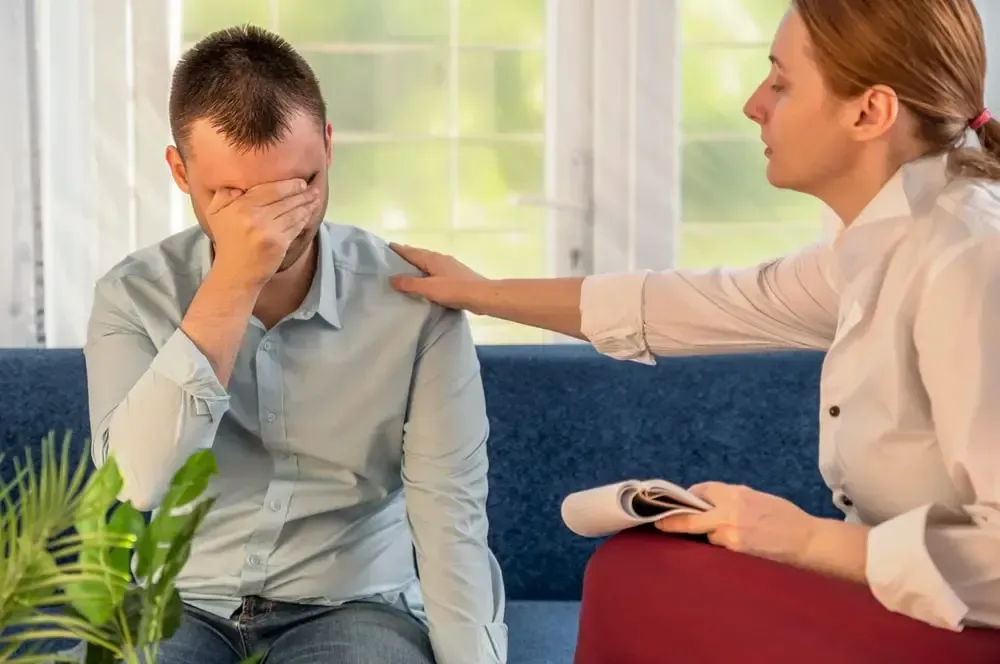
Recognizing you need help is the first—and often hardest—step. Getting support for PTSD is not a sign of weakness. It's a sign of strength. Here’s how you can find the help you need:
- Talking to a Professional:
- Your Doctor: Start with your primary care physician. They can assess your symptoms and refer you to a mental health specialist.
- Therapist/Counselor: Look for a therapist or counselor who specializes in trauma or PTSD.
- Types of Therapy: Several types of therapy have proven effective for PTSD:
- Cognitive Behavioral Therapy (CBT): Helps you identify and change negative thought patterns.
- Eye Movement Desensitization and Reprocessing (EMDR): Uses guided eye movements to help process traumatic memories.
- Exposure Therapy: Gradually exposes you to reminders of the trauma in a safe, controlled environment.
- Finding the Right Fit: Finding a therapist who understands athletes or specializes in trauma recovery can be beneficial. It’s okay to “shop around” until you find someone you connect with. It's your recovery.
- Helpful Resources:
- Online Therapy Platforms: BetterHelp and Talkspace offer convenient access to therapy from the comfort of your home.
- Trauma Recovery Support Groups: Connecting with others who have similar experiences can provide valuable support and understanding. Look for groups in your community or online cycling forums.
- Mental Health Apps: Headspace and Calm offer mindfulness and meditation exercises to help manage anxiety.
Remember, seeking help is a sign of courage, an investment in your well-being, and a step toward getting back to the things you love.
Additional Tips for Managing PTSD and Returning to Cycling
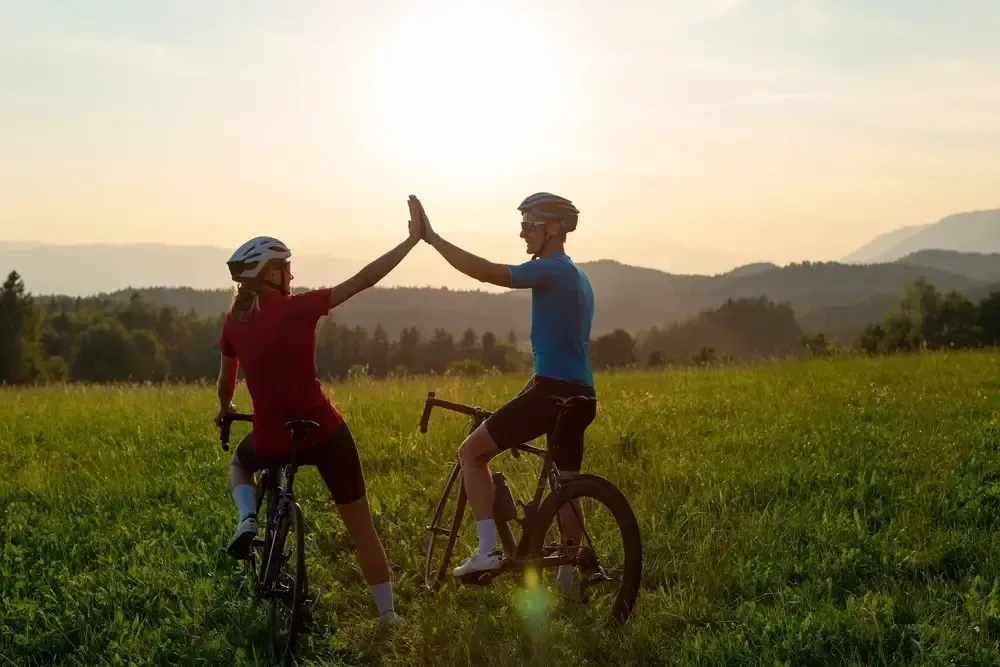
Getting back on the bike after a traumatic accident is a personal decision. There’s no right or wrong timeline.
If and when you are ready, here are some strategies to help manage PTSD symptoms and ease your return to cycling:
- Start Indoors: An indoor trainer provides a safe, controlled environment to rebuild your confidence. You can focus on your pedaling and physical recovery without the added stress of traffic or external factors. It's a good way to get your legs and your head back in the game.
- Buddy Up or Choose Quiet Routes: When you’re ready to venture outside, consider riding with a friend. Or select routes with low traffic volume. This can help reduce anxiety and provide a sense of support. It's about taking baby steps.
- Gear Up for Safety: Using safety equipment can increase your visibility and make you feel more secure. Consider these:
- Bright lights (front and rear)—even during the day.
- A rearview mirror or radar to keep an eye on traffic.
- A camera to record your rides (this can also be helpful in case of another incident).
- Mindfulness and Meditation: These practices can help you manage anxiety and stay present during your rides. Apps like Headspace or Calm offer guided meditations that can be particularly useful. It's about training your mind as well as your body.
These are just suggestions. What works for one person might not work for another. The important thing is to listen to your body and mind, and to proceed at your own pace. If you find that your anxiety or PTSD symptoms are overwhelming, seek professional help. There is no shame in asking for support.
How a Bicycle Accident Attorney Can Support PTSD Recovery
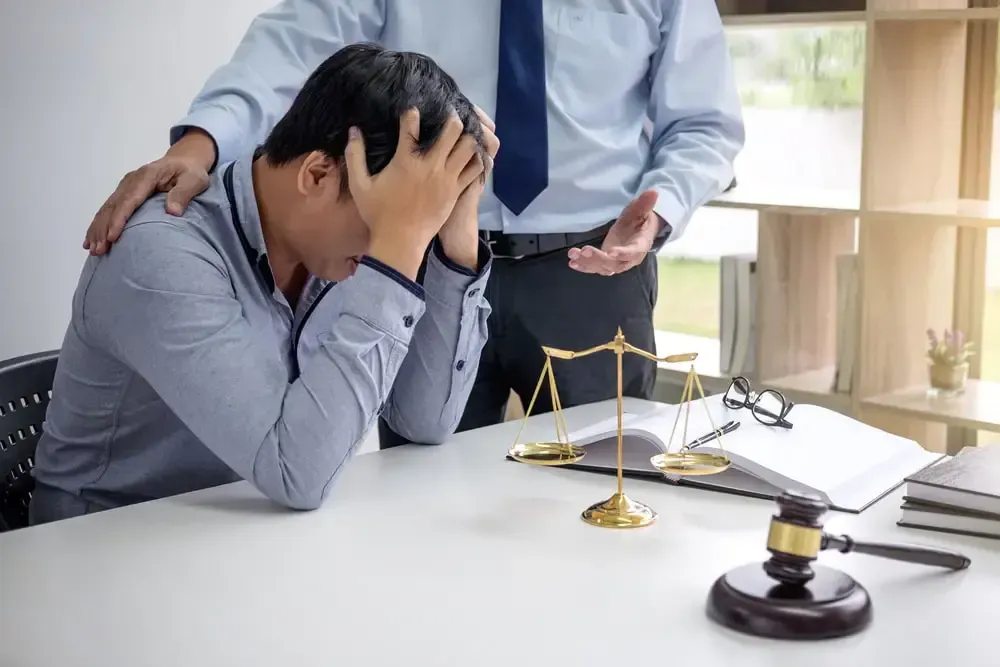
Healing from a bicycle accident goes beyond physical recovery. It also means addressing the emotional scars and navigating the legal complexities that often follow.
Contacting a bicycle accident lawyer, like
Bike Legal, can provide important support during this challenging time. Here's how:
- Connecting You with Resources: Experienced attorneys have connections with mental health professionals, trauma counselors, and other support services.
- Bike Legal can help you find therapists who specialize in treating trauma and PTSD, making the search for effective treatment easier. This saves you time and reduces stress when you need it most.
- Pursuing Compensation for Therapy: If someone else's negligence caused your serious accident, you might be entitled to compensation for your therapy and other mental health expenses. Many cyclists don’t know that PTSD treatment and counseling may be part of a personal injury claim.
- Bike Legal can represent you to help you recover these costs. This allows you to focus on healing without the added financial burden.
- Reducing Stress by Handling Legal Details: Dealing with insurance claims, gathering evidence, and negotiating settlements can be overwhelming—especially when you’re also coping with PTSD.
- Bike Legal can handle these details for you. This allows you to focus on your recovery and well-being.
- Advocating for Accountability: Holding negligent parties responsible can bring a sense of closure and justice, which is important for emotional healing. Knowing that someone is fighting for your rights can be empowering and provide peace of mind.
- Bike Legal will work tirelessly to ensure your voice is heard.
If you or a loved one has been in a bicycle accident and are struggling with the aftermath, don’t go through it alone. Bike Legal is here to help you find the support you need, both legally and emotionally, so you can concentrate on getting back on the road confidently.
Request a free consultation by calling 877-BIKE LEGAL (877 245-3534)
Read Next: 16 Important Questions to Ask Your Personal Injury Lawyer
FAQs: PTSD After a Bicycle Crash
What is the trauma after a bicycle accident?
The trauma after a bicycle accident refers to the psychological distress and emotional impact resulting from the event. This can include the immediate shock and fear experienced during the crash, as well as longer-term effects like anxiety, flashbacks, and PTSD. The severity of the trauma can vary depending on the nature of the accident, the extent of physical injuries, and individual factors.
How long does PTSD last after an accident?
The duration of PTSD varies from person to person. For some, symptoms may improve within a few months. For others, PTSD can become a chronic condition lasting for years if left untreated. Early intervention and appropriate treatment, such as therapy, can significantly improve the prognosis and shorten the duration of symptoms.
How to mentally recover from a bike accident?
Mental recovery from a bike accident involves several strategies:
- Acknowledging and validating your feelings.
- Seeking professional help from a therapist or counselor.
- Connecting with support groups or other cyclists who have had similar experiences.
- Practicing self-care techniques like mindfulness, meditation, and exercise (when physically able).
- Gradually re-introducing yourself to cycling in a safe and controlled manner.
Can a crash cause PTSD?
Yes, absolutely. A crash, especially one involving a motor vehicle, can be a traumatic event that triggers PTSD. The suddenness, the feeling of vulnerability, and the potential for serious harm can overwhelm the nervous system and lead to lasting psychological effects.
Read Next
